Easter: Resurrection eggs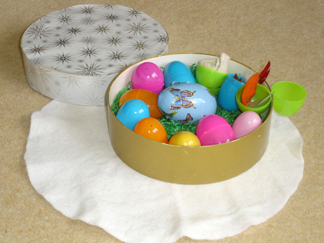 Resurrection eggs are colourful plastic or wooden eggs that help children engage with the Easter story. Each egg includes a Bible verse and an object or objects to symbolise that part of the Easter story. Children can also make their own resurrection eggs by choosing the symbols themselves. There are 12 eggs in all finishing with an empty egg to symbolise the resurrection. Below are suggestions for symbols and verses that could be used: 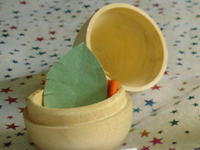 1 The triumphal entry into Jerusalem(Palm Sunday)The crowds that went ahead of him, and those that followed shouted, "Hosanna to the Son of David." Matthew 21: 1-11; Mark 11: 1-11; Luke 19: 28-44; John 12: 12-19 Symbols:palm leaf (real or paper); felt cloak; plastic/wooden donkey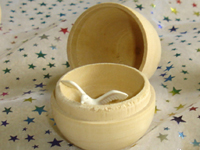 2 Jesus at the temple(Monday of Holy Week)"It is written," he said to them, "my house will be a house of prayer; but you have made it a den of robbers." Matthew 21: 12-13; Mark 11: 15-18; Luke 19: 45-46 Symbols:plastic/wooden/felt/paper dove 3 Jesus is anointed at Bethany(Tuesday of Holy Week)A woman came with a jar of very expensive perfume, made of pure nard. She broke the jar and poured the perfume on his head. Matthew 26: 6-13; Mark 14: 3-9 Symbols:perfume dropped on cotton wool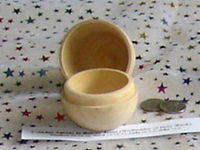 4 Judas agrees to betray Jesus(Wednesday of Holy Week)Then Judas Iscarriot, one of the Twelve, went to the chief priests to betray Jesus to them. Matthew 26: 14-16; Mark 14: 10-11; Luke 22: 1-6; John 13: 2 Symbols:silver coins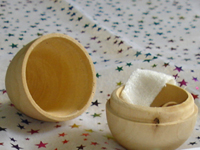 5 The last supper(Maundy Thursday)"This is my body given for you; do this in remembrance of me." Matthew 26: 17-30; Mark 14: 12-26; Luke 22: 7-38; John 13: 1-30 Symbols:wooden chalice and plate; clay/fimo bread; towelling 6 The Garden of Gethsemane(Maundy Thursday)"My Father, if it is possible, may this cup be taken from me." Matthew 26: 36-56; Mark 14: 32-52; Luke 22: 39-53; John 18: 1-17 Symbols:praying figure (pipe cleaner); silver chalice; play sword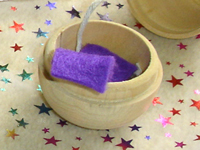 7 The Passion(Maundy Thursday)The soldiers twisted together a crown of thorns and put it on his head. They clothed him in a purple robe and went up to him again and again saying, "Hail, king of the Jews." Matthew 26: 57-68 and 27: 11-31; Mark 14: 53-65 and 15: 1-20; Luke 22: 63 to 23: 65; John 18: 12-14 and 19-24; 19: 1-16 Symbols:purple felt; rose thorns; string whip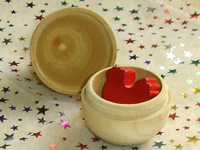 8 Peter denies Christ(Maundy Thursday)"Before the cock crows today, you will disown me three times." Matthew 26: 69-75; Mark 14: 66-72; Luke 22: 54-62; John 18: 15-18 and 25-27 Symbols:wooden or plastic cockerel 9 The Crucifixion(Good Friday)"Father forgive them, for they do not know what they are doing." Matthew 27: 32-56; Mark 15: 21-40; Luke 23: 26-49; John 19: 17-37 Symbols:wooden/metal cross; nail; cocktail stick spear; sponge; INRI sign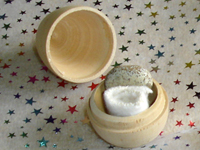 10 The burial(Good Friday)Joseph took the body, wrapped it in a clean linen cloth, and placed it in his own new tomb that he had cut out of the rock. Matthew 27: 57-61; Mark 15: 42-47; Luke 23: 50-56; John 17: 38-42 Symbols:rock, linen strip 11 The women bring spices and meet an angel(Easter morning)On the first day of the week, very early in the morning, the women took the spices they had prepared and went to the tomb. Matthew 28: 1-5; Mark 16: 1-5; Luke 24: 1-5; John 20: 1-2 Symbols:spices (cloves, star anise, cardamom, cinnamon); feathers (for angels) 12 The empty tomb(Easter morning)"Why do you look for the living among the dead? He is not here; he has risen." Matthew 28: 3-10; Mark 16: 6-11; Luke 24: 3-12; John 20: 3-18 Symbols:leave the egg empty, but decorate the outside of the egg with flower and butterfly stickersVictoria |